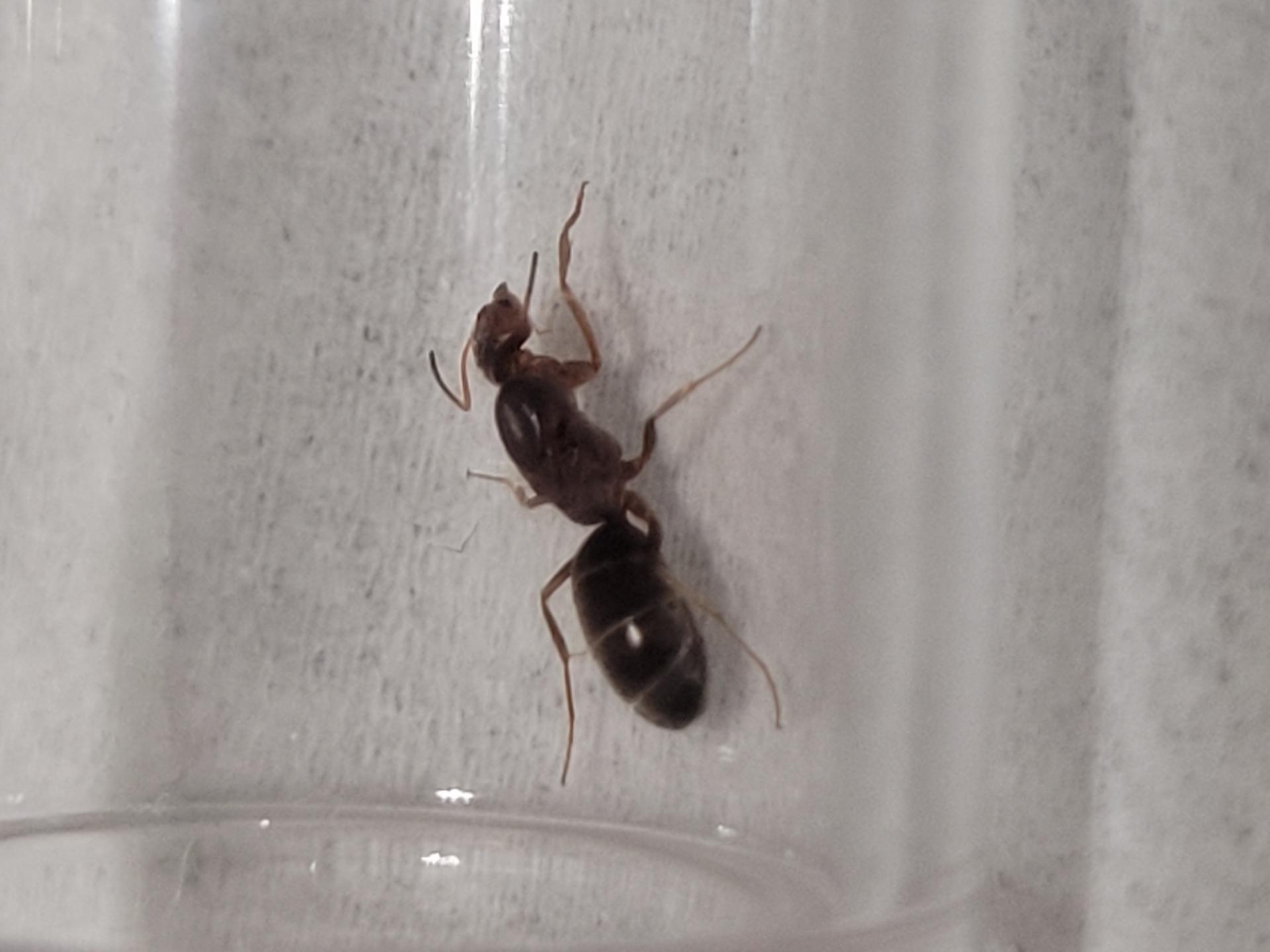- Formiculture.com
- Forums
- Gallery
- Members
- Member Map
- Chat

Need Help Identifying This Queen Ant
Started By
That_one_ant_guy
, Jan 15 2021 7:45 AM
29 replies to this topic
#21
 Offline
-
Posted January 15 2021 - 4:26 PM
Offline
-
Posted January 15 2021 - 4:26 PM
Hmmmm i just searched up Dorymyrmex and they do look alot alike
#22
 Offline
-
Posted January 15 2021 - 4:29 PM
Offline
-
Posted January 15 2021 - 4:29 PM
Hmmmm i just searched up Dorymyrmex and they do look alot alike
#23
 Offline
-
Posted January 15 2021 - 4:45 PM
Offline
-
Posted January 15 2021 - 4:45 PM
It’s definitely dorymyrmex. Could you get a better shot that shows the color of the queen?
My journals:
Polyergus Mexicanus: https://www.formicul...gs/#entry175528
Lasius minutus: https://www.formicul...cs/#entry174811
Lasius latipes: https://www.formicul...gs/#entry206449
General acanthomyops journal: https://www.formicul...yops-with-eggs/
Polyergus Mexicanus: https://www.formicul...gs/#entry175528
Lasius minutus: https://www.formicul...cs/#entry174811
Lasius latipes: https://www.formicul...gs/#entry206449
General acanthomyops journal: https://www.formicul...yops-with-eggs/
#24
 Offline
-
Posted January 15 2021 - 5:10 PM
Offline
-
Posted January 15 2021 - 5:10 PM
It's almost certainly D. insanus-complex. Bicolor are significantly larger than that.
#25
 Offline
-
Posted January 15 2021 - 5:13 PM
Offline
-
Posted January 15 2021 - 5:13 PM
#26
 Offline
-
Posted January 15 2021 - 5:42 PM
Offline
-
Posted January 15 2021 - 5:42 PM
Dorymyrmex insanus. I was wrong about it being bicolor, that’s 100% insanus.
My journals:
Polyergus Mexicanus: https://www.formicul...gs/#entry175528
Lasius minutus: https://www.formicul...cs/#entry174811
Lasius latipes: https://www.formicul...gs/#entry206449
General acanthomyops journal: https://www.formicul...yops-with-eggs/
Polyergus Mexicanus: https://www.formicul...gs/#entry175528
Lasius minutus: https://www.formicul...cs/#entry174811
Lasius latipes: https://www.formicul...gs/#entry206449
General acanthomyops journal: https://www.formicul...yops-with-eggs/
#27
 Offline
-
Posted January 15 2021 - 5:48 PM
Offline
-
Posted January 15 2021 - 5:48 PM
Okay thank you
Okay thank you
Okay thank you
#28
 Offline
-
Posted January 15 2021 - 8:02 PM
Offline
-
Posted January 15 2021 - 8:02 PM
Yes, they get a lot lighter than that too. I have see insanus queens with tan colored thoraxes(yes, I'm sure, they were emerging from an insanus nest for a flight).
Hi there! I went on a 6 month or so hiatus, in part due, and in part cause of the death of my colonies.
However, I went back to the Sierras, and restarted my collection, which is now as follows:
Aphaenogaster uinta, Camponotus vicinus, Camponotus modoc, Formica cf. aserva, Formica cf. micropthalma, Formica cf. manni, Formica subpolita, Formica cf. subaenescens, Lasius americanus, Manica invidia, Pogonomyrmex salinus, Pogonomyrmex sp. 1, Solenopsis validiuscula, & Solenopsis sp. 3 (new Sierra variant).
#29
 Offline
-
Posted January 15 2021 - 8:24 PM
Offline
-
Posted January 15 2021 - 8:24 PM
Yeah, I've seen these things fly almost year-round sometimes.
#30
 Offline
-
Posted January 15 2021 - 9:34 PM
Offline
-
Posted January 15 2021 - 9:34 PM
Dorymyrmex insanus. I was wrong about it being bicolor, that’s 100% insanus.
Don't even try to get southwestern Dorymyrmex down to species. Insanus complex it is, but there's a lot of undescribed species that look very similar.
0 user(s) are reading this topic
0 members, 0 guests, 0 anonymous users




















